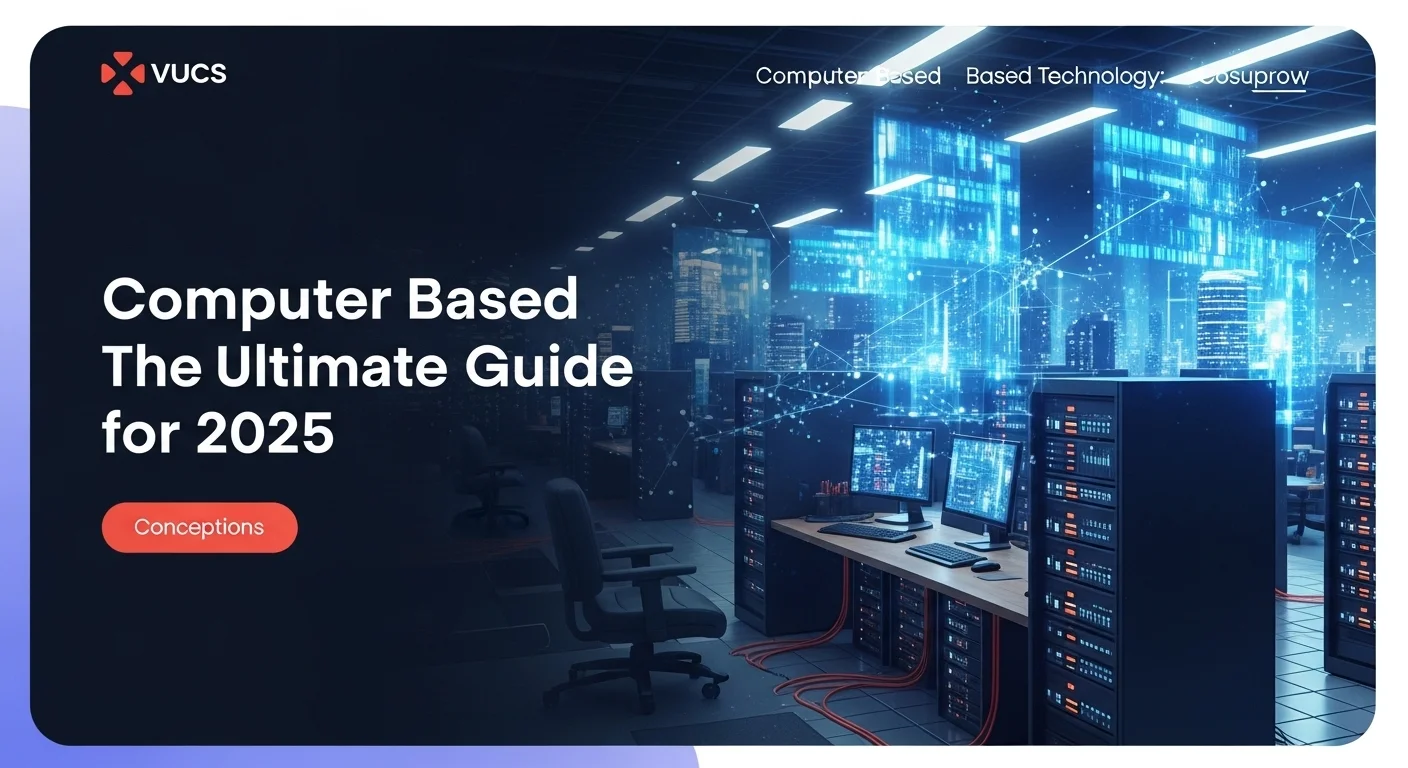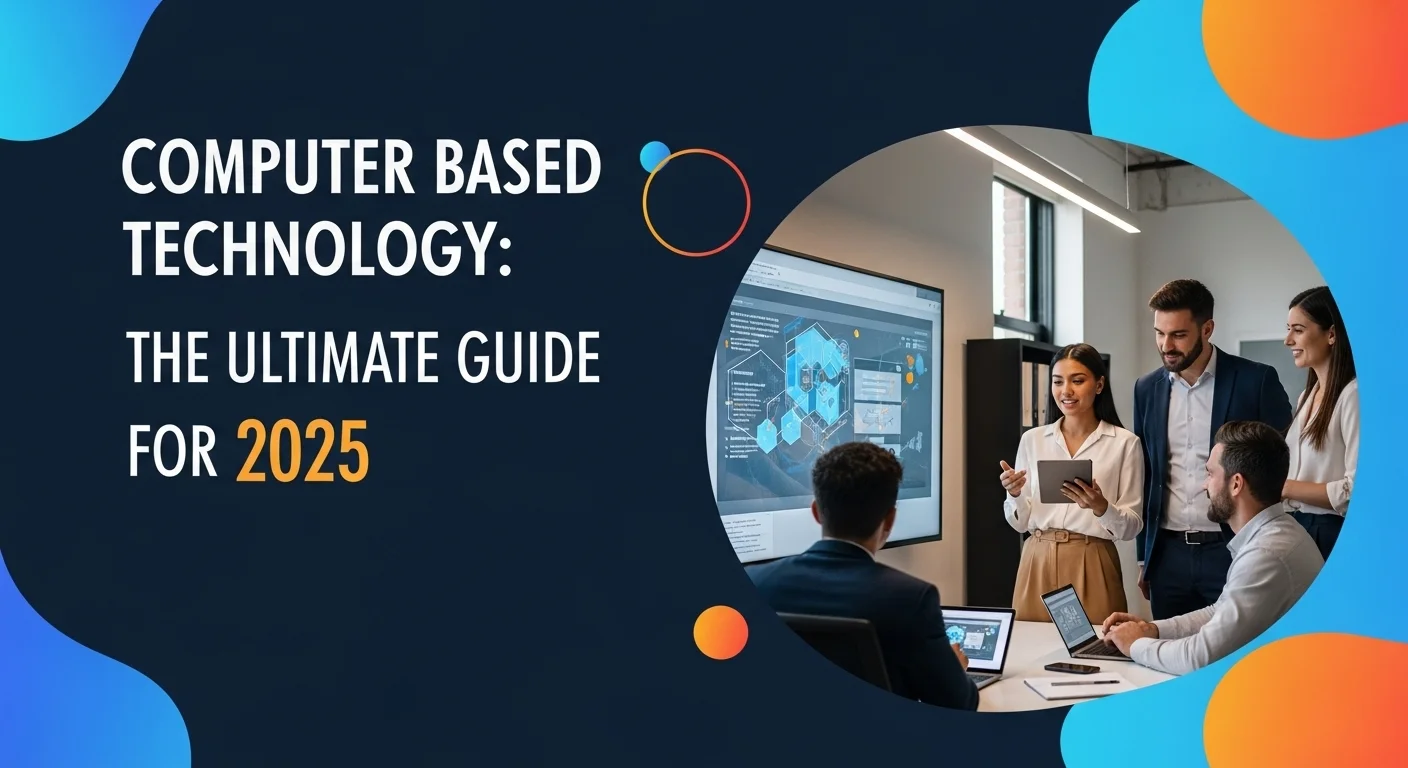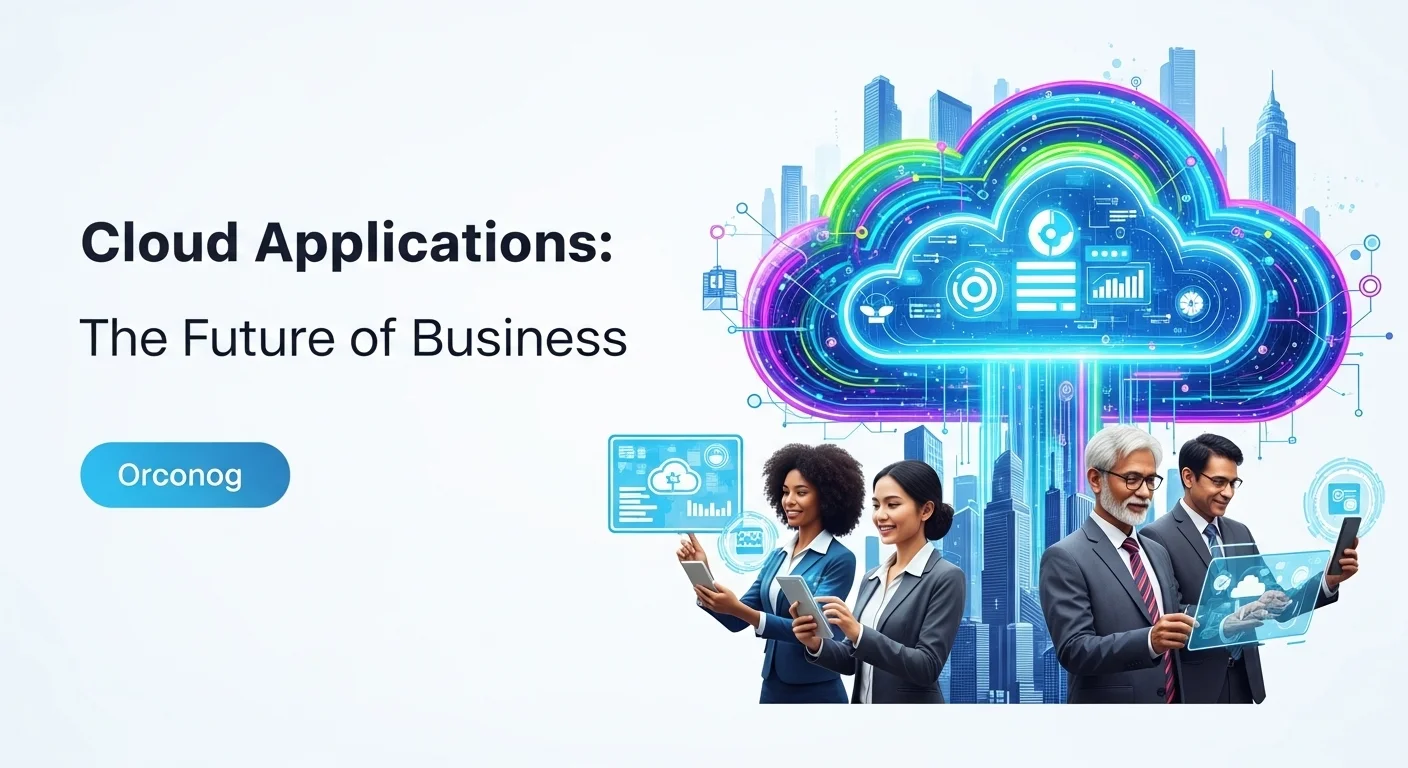Beyond the Buzzwords: A Real-World Guide to Computer Technology in Business

Executive Summary
In my years as a tech strategist, I've seen 'computer-based technology' evolve from a simple descriptor to the very backbone of modern business. This article is my attempt to cut through the noise. We'll trace the journey from the old days of dedicated server rooms to the game-changing flexibility of cloud computing. I want to give you a real feel for how these systems work, what they're made of, and why they matter. We'll look at the different cloud services available and how they're fueling a new wave of smart business ideas. My goal is to give you a clear, practical guide, whether you're an entrepreneur, a manager, or just someone curious about the tech that shapes our world. Think of this as a roadmap to understanding the digital landscape and using its powerful tools to grow and succeed.
Table of Contents
Table of Contents
What Does 'Computer-Based' Really Mean Today?
In today's world, everything seems to be 'computer-based.' It's a term we hear so often that it's easy to gloss over what it truly means. At its heart, it's any system where a computer does the heavy lifting. But that simple idea has sparked a revolution that has completely changed how we live, work, and connect. For anyone in business, understanding this technology isn't just an advantage; it's essential for survival. I've been on this journey for a long time, watching us go from clunky machines to the slick, interconnected world we have now. This story is marked by huge shifts: the personal computer landing on our desks, the internet connecting us all, the move to powerful central servers, and now, the incredible shift to cloud computing. This evolution hasn't just made old tasks faster—it has created opportunities for businesses that we could only have dreamed of a generation ago.
From Room-Sized Giants to Pocket Powerhouses: A Brief History
I remember hearing stories from the old guard about the first mainframe computers in the mid-20th century. These were beasts, taking up entire rooms and accessible only to large companies and governments. Their job was to crunch massive amounts of data, automating tasks that took armies of people. Then came the change that put power in our hands: the personal computer (PC). Suddenly, in the '70s and '80s, technology wasn't just for massive corporations. It was on our desks at work and in our homes. This kicked off a huge wave of software innovation, but everything was local—your programs and files lived on your machine.
The real turning point was the internet boom in the 1990s. Our standalone PCs were suddenly connected to a global network. This led to the next logical step: server-based computing. Instead of having everything on your own PC, you could connect to a powerful central server that hosted the applications and data. I was there when businesses started adopting this client-server model. It was a game-changer. It meant we could have centralized management, better security, and true collaboration. This is where we got the powerful business software—for managing resources, customers, and more—that could be used by everyone in the company. This was the foundation for what was to come.
The Cloud Revolution: Why Everything Changed
Then came the cloud, and honestly, it changed everything. Cloud-based computing took the idea of a central server and scaled it up to a global level, offering incredible flexibility. Instead of buying and maintaining your own expensive server hardware, you could just rent computing power from a provider over the internet. I can't overstate how massive this was. It completely leveled the playing field. Suddenly, a startup working out of a garage could access the same world-class infrastructure as a Fortune 500 company, without the huge upfront cost. This has been the single biggest driver of innovation I've seen in my career.
This new model gave us a menu of cloud computing services, often broken down into three types: Infrastructure as a Service (IaaS), Platform as a Service (PaaS), and Software as a Service (SaaS). Each offers a different level of management, so you can pick what's right for you. You can rent virtual servers (IaaS), use a ready-made platform to build your apps (PaaS), or just subscribe to software like email or CRM online (SaaS). The big players like Amazon Web Services (AWS), Microsoft Azure, and Google Cloud Platform (GCP) have created this amazing ecosystem that's constantly innovating and adding new tools, like artificial intelligence (AI) and machine learning (ML). This ecosystem is the engine of the modern digital economy. It's not just about doing calculations anymore; it's about having scalable, on-demand power that fuels a new generation of business ideas and digital transformation.

Your Playbook for Tech and Business Solutions
Finding your way through the maze of computer technology is crucial for any business that wants to thrive today. This section is your playbook, designed to give you a clear view of the options out there, from running your own servers to tapping into the power of the cloud. I've walked many businesses through these decisions, and understanding the tech, the strategies, and the resources available is the first step. It's about knowing the difference between running your own show with server-based computing and the flexibility of cloud-based computing. This knowledge is where great business ideas begin.
On-Premise vs. The Cloud: Making the Right Choice
One of the first big decisions a business has to make is where its technology will 'live.' Will it be on-premise or in the cloud? On-premise means you own and operate your servers in your own building. This is the classic model. It gives you total control over your hardware and data, which is a must-have for some industries with very strict data rules. You can build your security exactly how you want it. But that control isn't free. I've seen companies sink huge amounts of money upfront into servers and networking gear, not to mention the ongoing costs of power, cooling, and the IT staff needed to keep it all running. And if you need to grow? You have to buy more hardware, which is slow and expensive.
The cloud flips this model on its head. With cloud-based computing, you rent resources from a provider like AWS or Azure. This is a huge win for financial flexibility, as you pay as you go instead of making a huge upfront investment. The benefits are massive: you can scale up or down almost instantly, get access to a global network, and you don't have to worry about maintaining the physical hardware. I've found that the security offered by major cloud providers is often better than what most companies can build themselves. The tradeoff is you have less direct control over the physical hardware, and some worry about being locked into one provider. For many, the sweet spot is a hybrid approach, mixing on-premise for sensitive data with the public cloud for everything else.
Decoding the Cloud: IaaS, PaaS, and SaaS Explained
To really use the cloud well, you need to understand its 'as a Service' models. Think of it like a spectrum of control.
- Infrastructure as a Service (IaaS): This is like leasing the land. The cloud provider gives you the basic building blocks—virtual servers, storage, networking—but you're in charge of building everything on top, including the operating system and your applications. IaaS gives you the most flexibility and is perfect if you're moving existing systems to the cloud or have very specific needs. Think of Amazon EC2 or Azure Virtual Machines.
- Platform as a Service (PaaS): This is like renting a workshop that already has all the tools and electricity set up. The provider manages the underlying infrastructure and operating system, giving you a platform where you can just focus on building and running your applications. It lets your developers be developers, not system administrators. I've seen teams build and launch products incredibly fast using PaaS solutions like Heroku or AWS Elastic Beanstalk.
- Software as a Service (SaaS): This is the simplest model, like subscribing to a magazine. You get a complete, ready-to-use software application delivered over the internet. You don't manage anything; you just log in and use it. This is the model for tools we use every day, like Google Workspace, Salesforce, and Microsoft 365. SaaS has made powerful business software accessible to everyone.
Blueprint for a Successful Tech-Driven Business
Thanks to the accessibility of technology like the cloud, there's never been a better time to launch a tech-driven business. But a great idea is just the start. Here's a simple blueprint I've seen work time and time again.
- Find a Real Problem to Solve: The best businesses don't try to be everything to everyone. They find a specific problem for a specific group of people and solve it brilliantly. Look for underserved niches.
- Build on a Scalable Model (like SaaS): The Software as a Service model is a fantastic way to build a business. It gives you predictable, recurring revenue and lets you scale globally from day one using cloud computing services. Your whole business can run in the cloud.
- Use Data and AI as Your Secret Weapon: Every business today is a data business. Think about how you can use data to give your customers more value. Modern cloud platforms make it surprisingly easy to add AI and machine learning features, like personalized recommendations or smart automation.
- Obsess Over the User Experience (UX): In a crowded market, a simple, intuitive product wins. The technology should feel effortless to the user. This means really understanding your customers.
- Start Small and Grow Smart: The cloud lets you be lean and agile. You can launch a Minimum Viable Product (MVP), get real user feedback, and adapt quickly without risking a huge investment. This approach, which moves away from the old, rigid ways of doing things, dramatically increases your chances of building something people actually love and want to pay for.

Pro Tips to Master Your Tech Strategy
In today's digital world, just having the technology isn't enough. To really get ahead, you have to master it. This means being smart about how you optimize, secure, and evolve your tech. I've learned that having a deep understanding of your entire setup—from any legacy servers you still run to the sophisticated cloud services you use—is what separates the leaders from the followers. This strategic mindset doesn't just make you more efficient; it creates a space where real innovation can happen.
Don't Be a Headline: Essential Cybersecurity Practices
As we weave technology deeper into our businesses, we also open more doors for bad actors. Strong cybersecurity is not optional. Here are my non-negotiables:
- Adopt a 'Zero-Trust' Mindset: The old idea of a secure internal network being a safe 'castle' is dead. Today, you have to assume that threats can come from anywhere. A Zero-Trust model means you verify everyone and everything trying to access your resources, every single time. It's a must in our world of remote work and cloud services.
- Test Your Defenses Regularly: You can't fix weaknesses you don't know about. I always advise clients to schedule regular security audits and hire ethical hackers to perform penetration tests. It's far better to have a friendly expert find a hole in your defense than a malicious one.
- Train Your People—They're Your First Line of Defense: The biggest security vulnerability is often human error. Phishing scams and weak passwords cause a huge number of breaches. You need ongoing security training for all employees to teach them how to spot threats and practice good digital hygiene, like using a password manager and multi-factor authentication (MFA).
- Use the Cloud's Native Security Tools: The major cloud platforms have invested billions in building powerful, integrated security tools. Use them. Services for identity management, threat detection, and data encryption are built right in and are optimized for their environment. It's tough to match that level of security on your own.
From Costly Servers to Smart Clouds: Optimizing Your Setup
Getting the most bang for your buck from your technology is an ongoing process. You have to constantly refine your infrastructure to boost performance and cut costs.
- Make Cloud Costs Everyone's Business (FinOps): The cloud's pay-as-you-go model is great, but costs can get out of control if you're not paying attention. FinOps is a practice that brings financial accountability to your cloud spending. It's about getting your finance and tech teams talking so you can make smart decisions, like shutting down unused resources and using savings plans for predictable workloads.
- Automate Everything You Can (Infrastructure as Code): Manually setting up servers is a recipe for errors and it doesn't scale. I'm a huge advocate for Infrastructure as Code (IaC) using tools like Terraform. It lets you define your entire setup in code, which automates everything, reduces human error, and makes deployments fast and consistent.
- Build a Smart Hybrid or Multi-Cloud Strategy: For most companies, the future isn't just one cloud. A hybrid strategy lets you keep your most sensitive data on your own servers while using the public cloud's power for other things. A multi-cloud strategy means using the best services from different providers—maybe Google for AI and AWS for e-commerce—to avoid being locked in and to improve your resilience.
What's Next? Riding the Wave of AI, IoT, and Future Tech
To stay competitive, you have to keep one eye on the future. The choices you make today will determine if you can catch the next big wave of innovation.
- Put Artificial Intelligence (AI) to Work: AI isn't science fiction anymore; it's a practical tool. Cloud platforms offer a whole menu of AI services you can plug into your business. You can use it to build smart chatbots, predict when machinery will fail, or understand customer behavior. Exploring these services is a great way to spark new business ideas.
- Get Ready for the Internet of Things (IoT): The number of connected devices is exploding. This flood of data from smart sensors, wearables, and more is a goldmine of insights. Think about how IoT could change your industry. A strong, scalable cloud infrastructure is the key to handling all that data.
- Keep an Eye on the Horizon: Pay attention to emerging technologies like quantum computing, blockchain, and AR/VR. You don't need to be an expert today, but understanding the basics will put you in a position to act when the time is right. For sharp analysis on what's next, I often recommend resources like the MIT Technology Review. By taking these strategies to heart, you can build a tech foundation that's not just strong and secure, but also a launching pad for your next big breakthrough.
Expert Reviews & Testimonials
Sarah Johnson, Small Business Owner ⭐⭐⭐⭐
As a small business owner, this was really helpful. The comparison between on-premise and cloud made a lot of sense. I would have liked maybe one more concrete example for a retail business like mine, but overall it was very clear.
Mike Chen, IT Consultant ⭐⭐⭐⭐
A solid overview of the topic. The explanation of IaaS, PaaS, and SaaS was one of the clearest I've read. It affirmed a lot of the strategies I recommend to my own clients. Good, practical advice.
Emma Davis, Tech Student ⭐⭐⭐⭐⭐
This article is fantastic! I'm specializing in cloud technologies, and the way the author connected the history to modern practices was so insightful. The 'Blueprint for a Successful Tech-Driven Business' section gave me so many ideas. Thank you!



